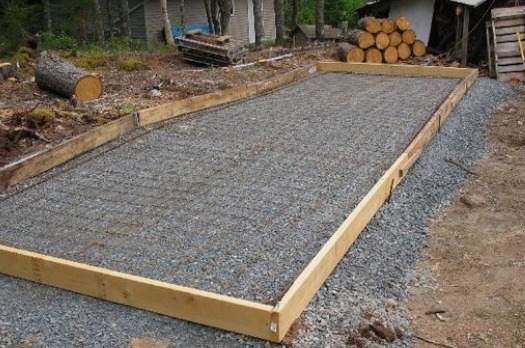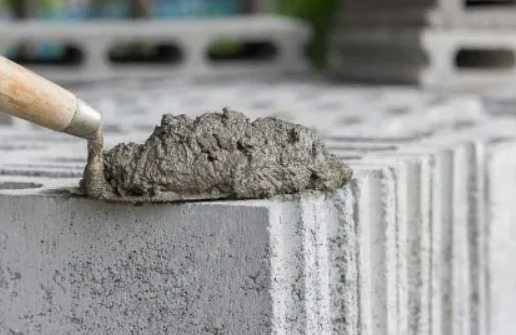Concrete, cement, and mortar are the terms that are used commonly in the construction industry by builders, architects, masons, and civil engineers. A layman will also be familiar with these terms, however, they might not know the difference between the three terms. They might think of concrete, cement, and mortar as the substances that are used in construction. Despite these terms being used synonymously, they have striking differences between them.
In this blog, Graana.com, Pakistan’s smartest property portal, has compiled all the information that will let you understand the basic difference between cement, concrete, and mortar.
Concrete

It is a complex building material used for the construction of houses, buildings, roads, patios, and foundation walls. Concrete is a quite flexible material as it starts as a dry mixture, then converts into an adaptable semi-liquid substance that has the potential to mold into any shape, and eventually dries to form a hard rock-like material.
In most concrete structures, metal reinforcement, such as rebar, is used to add strength and reduce the fractures that can happen in solid concrete structures.
Composition of Concrete
It is composed of sand, water, cement, and gravel along with fine and bristly aggregate. Water is added to activate cement, which helps bind the mixture together to form a solid stone-like structure.
Benefits of Concrete
There are countless uses of concrete in construction, some of them are as follows.
- It is a strong and tough material which is also cost-effective. Hence, it is an ideal construction substance for big structures that carry heavy loads such as roads and roofs.
- Concrete materials are long-lasting, and with the right care, they can survive for centuries. Moreover, its liquid form is not that heavy, so it can be used easily for construction.
- Also, there are ready-made concrete bags available in markets. They contain a dry mixture of cement, sand, and gravel, meaning all you have to do is add water to them.
Uses of Concrete
Concrete is used in almost all construction projects all over the world, ranging from buildings, bridges and roads above the surface of the earth to drains and foundations underneath it. Without concrete, the world would not have been able to build as much infrastructure as it has today.
Cement

Among all the building materials, cement is the most common one. Lots of times it is used as an exchangeable name for concrete. This building material is found in both mortar and cement.
Sometimes, cement is referred to as Portland cement, as it was made for the first time in the 19th century by an English mason, Joseph Aspdin of Leeds.
Nowadays, it has become one of the most widely used types of cement. It is a form of “hydraulic” cement, which simply means that it will set and harden when in contact with water.
Uses of Cement
It is typically used as part of concrete, primarily in buildings. However, its use was limited to blocking radioactive waste materials, back in the 20th century.
Benefits of Cement
Cement is one of the vital ingredients that formulate concrete. It offers strength and durability to the material, which is a major benefit of it.
Composition of Cement
In contrast to concrete and mortar, cement is traditionally composed of clay, limestone, shells, and silica sand, with limestone being the most dominant ingredient. After crushing, and combining, these materials are combined with some other ingredients such as iron ore and then heated to almost 2,700 F.
There is another material called clinker which is grounded into a fine powder and used for mixing multiple building materials, for example, mortar and concrete.
Mortar

Another building material that people often confuse with cement and concrete is mortar. Mortar is a part of some of the most commonly used building materials, however, it is much more viscous than the other ones due to the material used for its composition.
Mortar is not as strong as concrete or cement, which is why builders can not use it solely as a building material. Rather, it acts more like the glue that holds all the building materials together.
Composition of Mortar
The composition of mortar is slightly different from that of cement and concrete. It contains cement, sand, lime and water. Lime improves its durability, and water activates the cement so the material can harden.
Sellers typically sell mortar in bags, in dry form, meaning you just have to add water before usage. However, you can also create the mixture on the spot if you want to.
There are various types of mortars that have different purposes. It is essential to use the right type of mortar when you are working with bricks and other masonry units. Also, some of the mortar types are very hard and brittle and are prone to cracking if used improperly.
- Grout: Grout is also a form of mortar, however, its composition lacks lime. It contains more amount of water for easy flow to fill gaps between stone tiles and ceramic. Moreover, it is not a binding material due to the fairly high amount of water it contains.
- Thin-Set: It is made of cement, very fine sand, and water-retaining agents, for example, an alkyl derivative of cellulose. Thin-set helps attach stone and ceramic tiles to a substrate. Sometimes, builders add latex and polymer to thin sets to enhance their adhesive strength.
Benefits of Mortar
Generally, mortar is thick, which is why it is easier to control and put into place. You can lay it using a shovel as it does not require pumping.
Uses of Mortar
It is generally used with brickworks, binding the bricks together while giving a softer finish in comparison to cement or concrete.
Mortar, cement, and concrete are some of the most essential construction materials. They have distinctive characteristics and uses. In this blog, we discussed the differences between cement, mortar, and concrete at length. Visit Graana blogs, for more informative and interesting blogs.
Read More
Difference Between Class A, B & C Properties
Aerotropolis: Structure, Facilities & More




